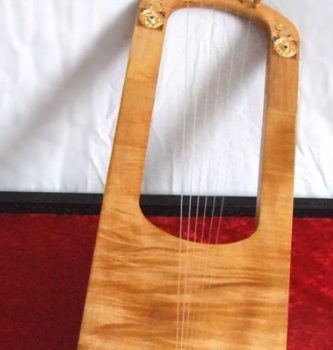Below is a detailed article about Anglo Saxon people with respect to their society, life, culture, beliefs, mythology, law architecture and much more. Let us study all these details.
Who were the Anglo Saxons?
Contents
The Saxons were a Germanic Tribe that occupied the regions of Netherlands, Denmark, and Germany. The term is given to the ‘Saxons’ is derived from the word Seax which is the knife that each one always carried to attack an opponent.

The Saxons were not literate. They have no records of art and style or culture and innovation. They were strong and primarily barbaric in nature. They had a common attire and majority of them had a military background. The Romans were a mixture of military, artists, writers, Latin scholars, etc but the Saxons that defeated them were not the same.
Here is all you need to know about this era.
anglo saxon women
white anglo saxon protestants
all about anglo saxons
anglo saxon symbols
anglo saxon vikings
anglo saxons armoury weapons facts
origins of anglo saxons
anglo saxon american who are they
anglo saxon female names males names last names surnames
anglo saxon gods and goddesses facts
anglo saxon kingdoms
anglo saxon kings
anglo saxon religions
anglo saxon runes
anglo saxons poetry and its brief history
how was white anglo saxon protestant culture
invasions during the anglo saxon era
the anglo saxon time period significance
the origin of anglo saxon race
where did the anglo saxons come from facts
white anglo saxon protestant stereotypes
words and alphabets of the anglo saxons
list of anglo saxon names of babies
anglo saxon tribes
anglo saxon old english translator
definition of anglo saxon literature and characteristics
beowulf anglo saxon poem
clothing from anglo saxon era
anglo saxons questions and answers
anglo saxon poetry examples
history of the anglo saxon riddles
anglo saxon timeline
anglo saxon art facts for kids
map of anglo saxon england
anglo saxon weapons arms
how did anglo saxonism help foster american imperialism
anglo saxon food
anglo saxons warrior
Dawn of the Anglo Saxon Era
The Anglo Saxon Era came to be expanded when they attacked Britain during the Roman British Rule. They attacked the Roman British rule during the late 3rd century and destroyed a network of forts. They captured the South coast of England and settled in the same areas. The South Coast later came to be known as the Saxon Frontier.
The Roman commander – Caurasius, was given the responsibility to wipe out all the Frankish and the Anglo Saxons from the British Empire. He was successful in his attempt to made a minor faulty at guarding the sea frontier which made the emperor angry and had him killed. These internal differences between the Romans made the Saxons powerful.
More and more Saxons migrated from continental Europe and settled in the southern coast of England. On the other hand, there was more pure Barbarian invasion from the northern coast. This weakened the Roman Empire.
Invasion by the Anglo Saxon Rule
The Anglo Saxion regions were the seven main townships of Great Britain, that is, the Northumbria, Mercia, East Anglia, Essex, Kent, Sussex, and Wessex. Their rule was common and out of these areas, the major ruling areas were Northumbria, Mercia, Anglia, and Wessex while the others were the minor ruling areas.
The Northern areas of Britain were ruled by Anglo Saxon ruler, Kent. He was efficient but died in 616 and another powerful Ruler took his place and his kingdom was East Anglia.
Many kings were defeated and many remained but there is a high instability seen in the Anglo Saxon rule in terms of handling the monarchy.
The Anglo Saxon Kings and Queens
Many Anglo Saxon Kings contributed to the spread and learning of English from Latin. The Viking Invasion in the north of England led to the people being oppressed. The Sons of Edward the Elder, an Anglo Saxon King of the 7th and 8th Century fought the Vikings and stopped their invasion. They were known as Athelstan, Eadred, and Edmund I. One of the sisters of Edward the Elder married Aethelred, a Viking King who died leaving his wife a widow who then took over the Kingdom of Mercia. She was known as the ‘Lady of the Mercians’.
She was powerful and resorted to the Anglo Saxon clan, she encouraged her brother Edward the Elder to recapture Essex which he did in 913. After him, his son Edgar took over the kingdom. His coronation was a huge affair and a celebrated controversy.
King Edward the Confessor

King Edward the Confessor is also known as ‘Saint Edward the Confessor’. He was born in the 11th century to Aethelred the Unready and his second wife. At a young age, due to Viking invasions, his mother took him and flee to Normandy where he spent a lot of his childhood. His father died when he was young and his half brother took over the throne at the age of thirteen and fought several wars as his brother – Edward fought alongside according to the Scandinavian traditions.
His half brother Edmund died in a war which left Edward alone to rise to the throne. His grand coronation took place in London, in the cathedral of Winchester. Throughout his reign, he was loved by his people. He had four mighty sons of which he was very proud. He promised each of them that they would be Kings after him.
However, there was no clear heir at the time of his death. Harold Godwinson was a man by his side and conquered Wales in 1063. He was the first English King after the death of Edward the Confessor. He also was known as King Harold II. He was defeated by William the Conqueror, the Norman King.
Edward the Confessor, for his goodness, generosity, and kindness as a King made him a Saint and was declared so by Pope Alexander III. October 13 across English nations is commemorated as the feast of Saint Edward the Confessor.
Thus, after the reign of King Edward, the Anglo Saxon Era in Great Britain came to an end.
Anglo Saxon Society
The Anglo Saxon groups migrated to Britain around 400 BC and were a powerful society in terms of growth and development of the English people. It did not take them long to settle in. They lived in well-made houses and were governed by an Anglo Saxon King. They also had a smooth running government system about which we will read along.
The Anglo Saxons lived in groups within their territories. Most of them were warriors and soldiers that supported the Kings in the battlefront. There were also groups of artisans and craftsmen. Most importantly, there were peasants and these belonged to the working class. There were also women that sewed clothes and weaved sweaters. People also served as slaves in the Anglo Saxon Society for the uppermost class.
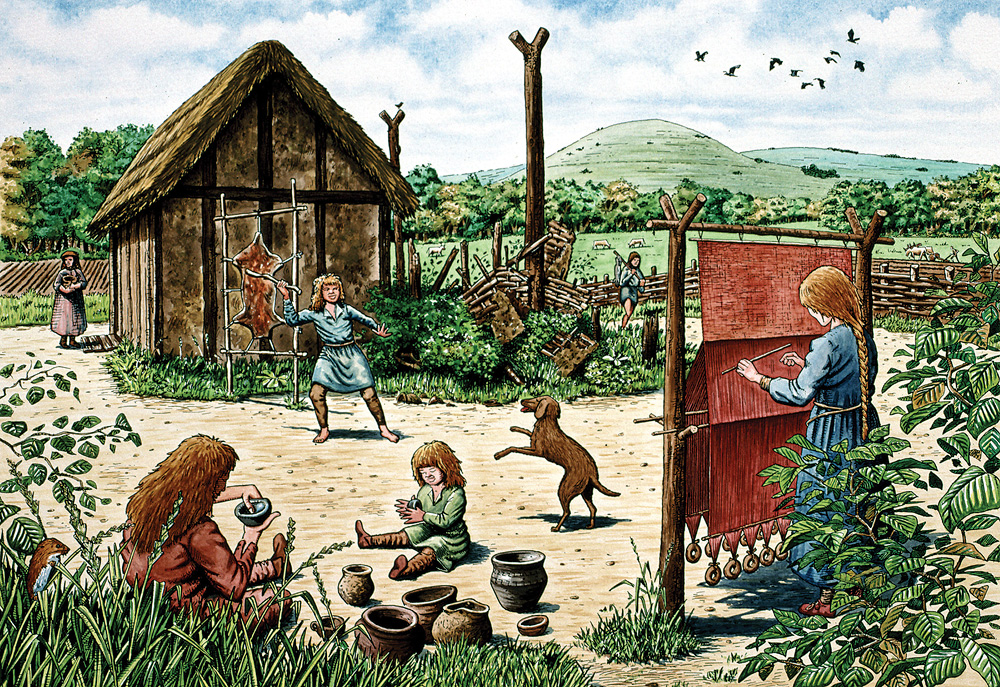
There were feasts celebrated in the Anglo Saxon Society where many were called to a joyous dinner full of delicious meals and entertainment. These were hosted usually at the court of the Kings where people feasted and had a good time. For their pleasure, the men even went hunting and celebrated over meat and beer. The doctrines of the Anglo Saxon society included loyalty, friendship, and bravery.
This is derived from the various literature and excavated material by archaeologists and scientists.
Anglo Saxon Jewelry
Out of all the Medieval European eras, the Anglo Saxon era seems to have more inclination toward art and design. This is derived from the various excavated material and other matter by the archaeologists. Jewelry was worn by both men and women in the Anglo Saxon era be it necklaces, bracelets, rings, and other jewelry.
Gold was a precious metal even then and most of the jewelry was made with gold, especially the jewelry of the upper class, that is, the kings and the nobles.
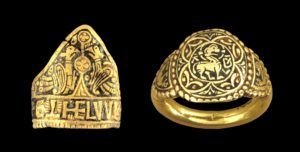
Goldsmiths held a high status in the society, and it seems they also had the liberty to move around freely in the Anglo Saxon countries. Most of the metal work was appreciated by the neighbouring countries. Hence, there was a trade of ornaments too. Italians imported this metal jewelry from the Anglo Saxons.
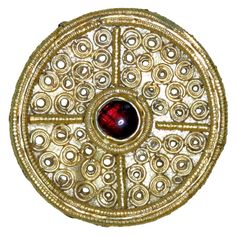
The men wore decorative belt buckles on their soldier uniforms. The color and the type of metal used represented the tribe they belonged to and the position they held. Many of these items that also included earrings, pendants, rings, and necklaces are all preserved and are on display at the British Museum.
Anglo Saxon Christianity
Augustine was given a church by the Saxons and that’s how the Saxons resorted to priestly learning and civilization in the Anglo Saxon Period.
Christianity came to widespread in the 5th and 6th century AD. The spread of Christianity influenced many cultures, traditions, and cults that existed in the era. The Roman influence in Britain gave rise to the spread of Christianity. In the fourth century, Christianity was even made the official religion of the Romans by the Emperor Theodosius “the Great” who was the ruler after Constantine.
The influence of St Patrick in Ireland helped spread Christianity in the Irish villages and townships. Pope Gregory the I, noticed this influence of Christianity among the people and sent the Benedictine monk – Augustine of Canterbury to the Anglo Saxons to spread Christianity for political reasons.
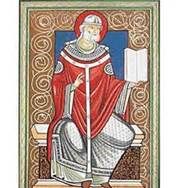
Augustine was given a church by the Saxons and that’s how the Saxons resorted to priestly learning and civilization in the Anglo Saxon Period.
Anglo Saxon beliefs
It is been derived from many kinds of literature found in the Anglo Saxon period that the Anglo Saxons had strong beliefs in religion and were involved in spirituality too. Anglo Saxon Paganism was also a matter of great controversy. Many excavations suggest the worship of pagan gods and the beliefs and rituals carried out.
Christianity was introduced in the latter phase of the Anglo Saxon era and then became an adopted culture in the Anglo Saxon Society.
Christianity came to widespread in the 5th and 6th century AD. The spread of Christianity influenced many cultures, traditions, and cults that existed in the era. The Roman influence in Britain gave rise to the spread of Christianity. In the fourth century, Christianity was even made the official religion of the Romans by the Emperor Theodosius “the Great” who was the ruler after Constantine.

Augustine was given a church by the Saxons and that’s how the Saxons resorted to priestly learning and civilization in the Anglo Saxon Period.
Anglo Saxon Values and Anglo Saxon Characteristics
From the many pieces of literature found in the Anglo Saxon era, it can be derived that the Anglo Saxons were generous and courteous. They were loyal to the law and to the community. They had unity amongst one another and also were welcoming within the tribes.
They were also very courageous and brave. They fought for the people and were happy to serve. They were also hardworking and kept away from theft and lies. Most of this is based on the famous poem from Anglo Saxon literature – Beowulf.
Anglo Saxon Law
The Anglo Saxon law was practiced in the Anglo Saxon era. The Anglo Saxon law was derived from the ancient Germanic laws and thoughts. They were much in sync with the Scandinavian law and Barbarian law. The Anglo Saxon law was made from three contents – laws given by the king, customs and practices from the Domesday Book and privately made legal rules.
Before the 10th century, there was the act of penalizing a criminal for an act but as time passed, confiscation and capital punishment also became part of the culture. Laws were equal for men and women in terms of property rights, ownership, and inheritance.
The laws revolved highly around the preservation of peace. Peace was a separate rule and was not to be compromised with or violated in any case within the tribes of the Anglo Saxons.
Anglo Saxon Architecture
Anglo Saxons constructed many secular as well as ecclesiastical buildings. The ecclesiastical buildings were rather huge and the secular ones were smaller compared to them and they had a simple architecture. Some of them can be seen even today. The secular structures consisted of the town hall and were the fundamental meeting point of the society. They were made of timber walls.

The ecclesiastical buildings were large and were mainly influenced by the Roman and Celtic populations. There were towers on every church building that stood as the feature of the Anglo Saxon architecture. Today, many of these architectures are found in Oxford, West Sussex, Oxfordshire. St Peter on the wall is one the most influential Anglo Saxon building that stands today. Its existence dates back to the year 654 AD.
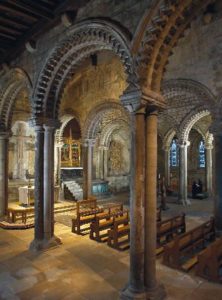
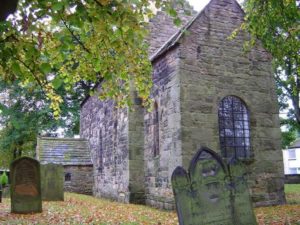
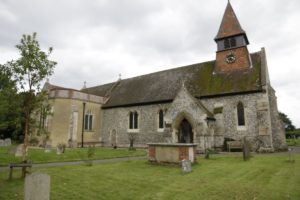
St Michael, North Gate, Oxford is also a fine example of Anglo Saxon Architecture. St Nicholas Church, West Essex is another Anglo Saxon architectural marvel that holds today.
Anglo Saxon Houses
From the excavations found in the East of England and the discovery of the town of West Stow, the houses of the Anglo Saxons is known to have been built with wood. Reconstructions by archaeologists have suggested the houses to have hay on top and wood standing from all sides.

Most of the country was covered in forests and therefore, the availability of wood was in plenty which could be used for various purposes. They lived in these houses, cooked, and relaxed. The houses faced the sun as much as possible so as to get as much light and heat. The homes were also close to the river so the water intake was high.
They grew as many plants and vegetables they could, around the place for ease in receiving food. They also cooked inside these homes.
Anglo Saxon Flag
There were four major regions that were inhabited by the Anglo Saxons, namely the Kingdom of East Anglia, Kingdom of Mercia, Kingdom of Northumbria, and the Kingdom of West Saxon. Each had their own flag. The Saxons in England were last of the Anglo Saxons before the Norman invasion. The flag of the Kingdom of West Saxon was red in color with a yellow seadragon in the center.
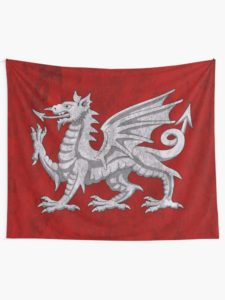
This may have been influenced by Roman art from the Roman era in England. This flag has been mentioned in the Battle of Burford in 752 AD and in the Battle of Hastings in 1066 AD.
Anglo Saxon Music
Music was a fundamental part of social life in Anglo Saxon Europe. Music influence began when the flow of Christianity began. It then became a matter of religious importance. Hymns and worship music was developed and sung in churches as a part of the holy service.
There was Carol dancing in churchyards toward the end of the year. The feasts of the rich Anglo Saxons were accompanied by music and dancing. There was a wide range of musical instruments used in the Anglo Saxon society and manually played by the people.
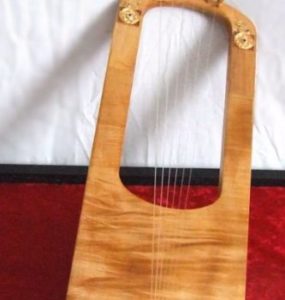
They played drums, flute, panpipes, and bells. Soft music was also played through the harp at the houses of the upper class during the feasts they held.
Anglo Saxon Life
Life was hard in the Anglo Saxon era but was simple. The society was divided into three classes – the upper class, the middle class, and the lower class. The upper class enjoyed their life hunting and hosting events. There were music and cheer. Life was hard for the lower class, they were known as ‘thralls’. They did hard labor but they were free. They were peasants and many of them borrowed land from the ‘thanes’ or the people from the upper class.
England was covered with forests and there was always the danger of a wolf attack. Domestic animals were kept in safe sheds due to this fear. Villages were self-sufficient as people grew their needs from nature. They even sewed their own clothes. However, salt and iodine were exported from other places. As time passed by, learning was encouraged and literature was promoted. Christianity began to spread and people began to gain a perspective.
